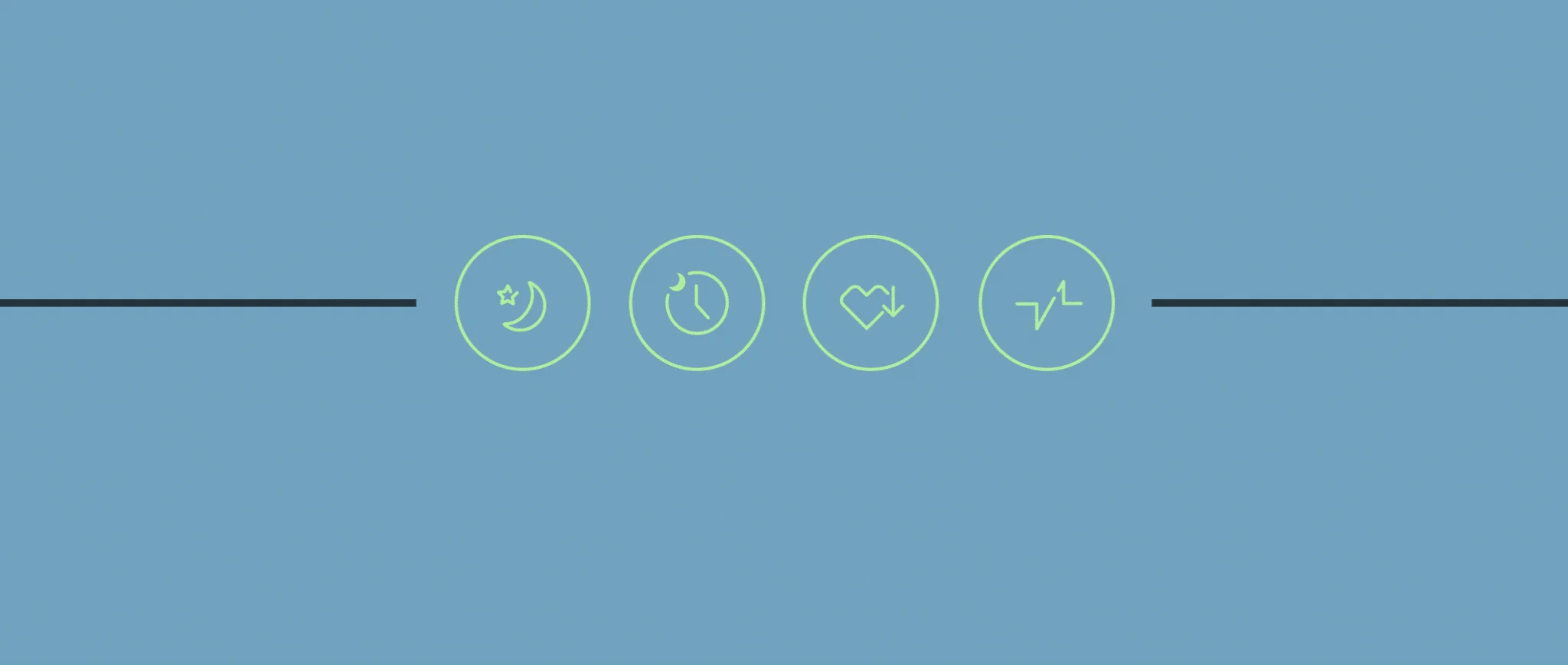Topics
- Article
- COVID-19
- Research Studies
Positive Changes in WHOOP Data During COVID-19 Social Distancing

What effects has physical distancing had on human performance?
The COVID-19 pandemic altered the way we behave as a society, both in the US and worldwide. What effects has physical distancing had on human performance? From more sleep and better sleep consistency to an increase in HRV and decrease in resting heart rate, we’ve seen a number of positive and healthy changes in WHOOP members’ data during these difficult and unprecedented times.
The Study
Data from 50,000 WHOOP members was examined from January 1 through May 15 of this year, including over 6.3 million sleeps and 4.9 million workouts. The goal was to quantify changes in sleep/wake behaviors and exercise patterns during social distancing, and the impact they had on markers of cardiovascular health tracked by WHOOP. March 9 was used as the date when social distancing began, as it marked the week in which the World Health Organization classified COVID-19 as a pandemic and the US declared a national state of emergency. Written by Emily Capodilupo, WHOOP Vice President of Data Science and Research, and Dean Miller, Research Officer at Central Queensland University, the full manuscript (which has not yet been peer reviewed) is available as a pre-print here: Changes in health promoting behavior during COVID-19 physical distancing: Utilizing WHOOP data to Examine Trends in Sleep, Activity, and Cardiovascular Health.
key findings from Social Distancing: More Sleep, Increased Exercise, Lower Resting Heart Rate, Higher HRV
The study found the following changes during physical distancing in the 50,000 subjects analyzed in relation to their baseline averages prior:
- Obtained 11.4 minutes more sleep each night
- Fell asleep 25.8 minutes earlier
- Dedicated 12.6 more minutes to sleep (more time in bed)
- Reduced social jetlag (difference between weekend and weekday bedtimes) by 13.8 minutes, helping to maintain circadian rhythm
- Increased frequency of exercise by 1.1%
- Increased exercise intensity by spending 1.8% more time in 3 highest heart rate zones
- Lowered resting heart rate by 0.9 beats per minute
- Increased heart rate variability by 1.3 milliseconds
Social Distancing Sleep Chart
Below is a graph depicting the subjects’ average nightly hours of sleep before and after social distancing began (notice how the spikes on weekends become less pronounced):
Improvements in Resting Heart Rate During Social Distancing
And here is the average resting heart rate of the subjects prior to and during social distancing. It can clearly be seen that along with the increase in sleep displayed above, there was a corresponding decrease in RHR:
What It Means: Significance of Study Results
It may come as no surprise that in a situation where people aren’t commuting to work or going out at night they are able to get more sleep, and even exercise more as well. However, what makes this so compelling is that this unprecedented naturally occurring experimental condition allowed for a study of such an enormous magnitude. Changes that may seem small on the surface have a much greater statistical significance when considering the incredibly large data set examined. This is also the first study to quantify the effect on health related behaviors – such as sleep timing and duration, and exercise frequency and intensity – of the COVID-19 pandemic and its associated social distancing mandates. It is the first to indicate that physical distancing actually had measurable population level impacts on physiological parameters (like resting heart rate and HRV). Additionally, the findings are impactful beyond COVID-19 specifically as this is the first paper that has ever shown that such a small change in sleep and exercise has this measurable effect on cardiovascular health.
WHOOP Proof of Concept
The findings suggest that our cardiovascular health is sensitive to small behavior changes. While the responses are proportionally small, this demonstrates the WHOOP philosophy that a series of small behavior changes to daily life can – over relatively short periods of time – add up to real performance edges.
Going Forward
This study showed that a positive externality of the COVID-19 pandemic was that it created an opportunity to revert to more natural sleep/wake patterns, and that the removal of social and professional obligations that compete for our time allowed for more time to exercise. As the world’s economies reopen and we are once again faced with more competing demands for our time, we are curious to follow up and see if these impactful behavior changes are maintained.